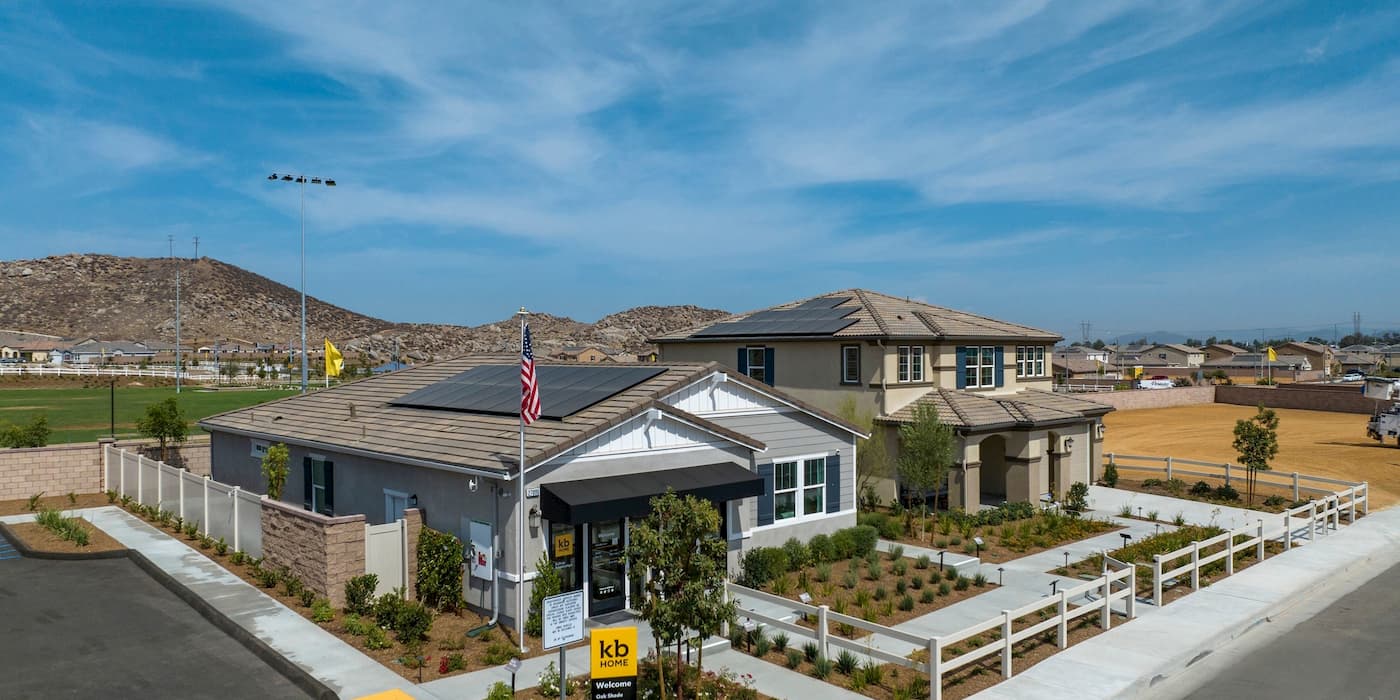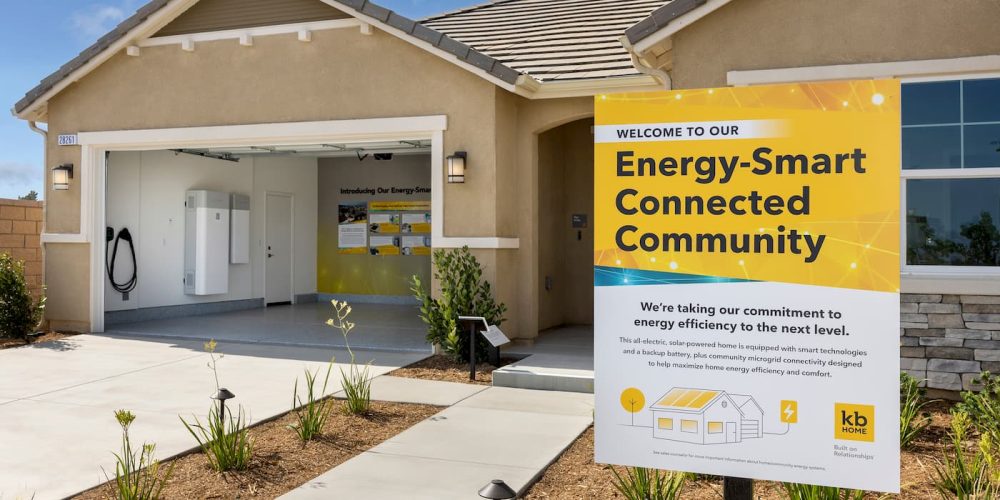
New clean energy communities are coming to California. Leading homebuilder KB Homes announced Wednesday it has established what it calls the first all-electric, solar-and-battery-powered microgrid community in the golden state.
KB partnered with the US Department of Energy (DOE), SunPower, Schneider Electric, and Kia, among others, to test the new energy-efficient homes at several of its new communities.
The new all-electric, solar-and-battery-powered micro-communities are located at Oak Shade and Durango, part of KB Homes Shadow Mountain master plan in Menifee, California. However, these are not your typical energy-efficient homes with added solar panels.
The houses involved in these communities are equipped with backup battery storage, bidirectional electric vehicle charging capabilities, and perhaps most importantly, are interconnected, creating a resilient energy network.
When combined, these technologies establish a self-supporting energy network capable of powering a neighborhood during a power outage.

How all-electric, solar-and-battery-powered community works
Each home in the microgrid community will come fitted with the following:
- SunPower Equinox solar system
- A 13 kWh SunVault battery storage
- Rheem® ProTerra® hybrid electric heat pump water heater
- Carrier® high-efficiency two-stage heat pump
- Schneider Electric D Energy Center Smart Panel
Individual solar panels will harness energy from the sun and then store it in powerful batteries to serve as backup. In addition, community solar panels are connected to a 2.3 MW battery to complement the network’s power supply.
On top of this, all houses will come equipped with electric wiring for EV charging, while some homes will feature Wallbox chargers. Homeowners can enroll in SunPower’s Virtual Power Plan (VPP) program, which allows them to utilize their EV chargers, battery storage, and other energy solutions to balance the grid load while demand is highest automatically.
Over 200 all-electric homes will be solar-powered, with added battery storage while connected to a community microgrid. As a result, the communities are power-outage resistant, according to SunPower, serving as a model for the future of home development.
Electrek’s Take
Microgrids are not a new invention. They have been around for some time but are primarily used at industrial sites or extensive commercial developments. However, with residential energy use accounting for about 20% of GHG emissions in the United States, the community KB Homes and its partners have built should serve as a blueprint for new home building.
Furthermore, extreme weather is the number one culprit behind blackouts in the United States. According to a recent study from Climate Central, around 83% of reported major outages were from weather-related events. More importantly, the number of blackouts due to weather has risen roughly 78% in the past 10 years.
Building grid-resilient communities using solar, battery storage, and all-electric components can significantly reduce the impact.
For example, Babcock Ranch, a “solar-powered community” in Florida 12 miles from Fort Meyers, had water, electricity, and internet, while over 5 million others were not as fortunate after Hurricane Ian plowed through the state.
Last year, the DOE announced $61 million in funding to create ten “connected communities” capable of interacting with the grid to optimize energy consumption and reduce carbon emissions.
According to a DOE study, grid-interactive efficient buildings (GEBs), such as those introduced by KB Homes in California, could save $18 billion in power system costs while cutting 80 million tons of CO2 emissions each year.
On an annual basis, this is more emissions than 50 medium-sized coal plants or 17 million vehicles. The first two communities in Alabama and Georgia have used around 42% to 44% less energy than an average all-electric home.
It’s proven these microgrid communities work. Now it’s time for federal officials to step up and accelerate this transition. It will be less costly in the long run.
FTC: We use income earning auto affiliate links. More.



Comments